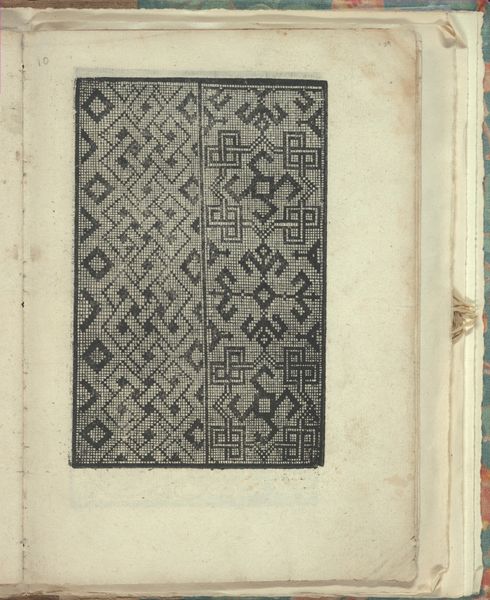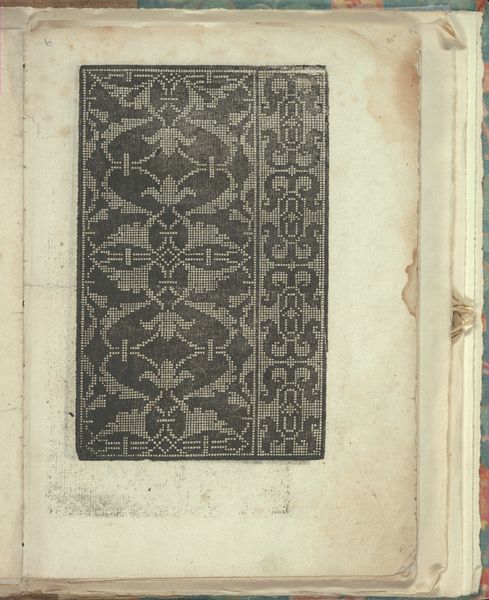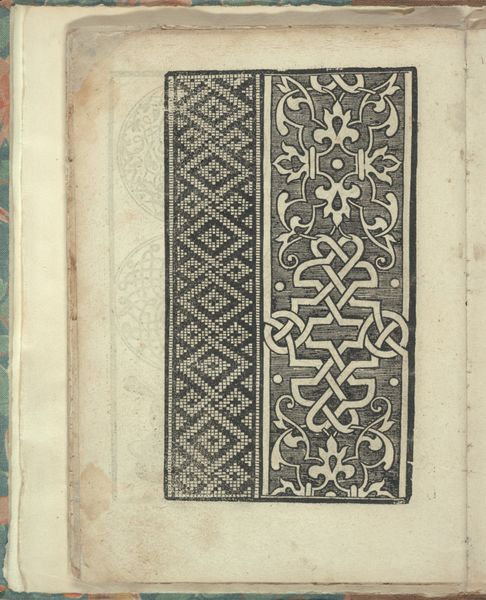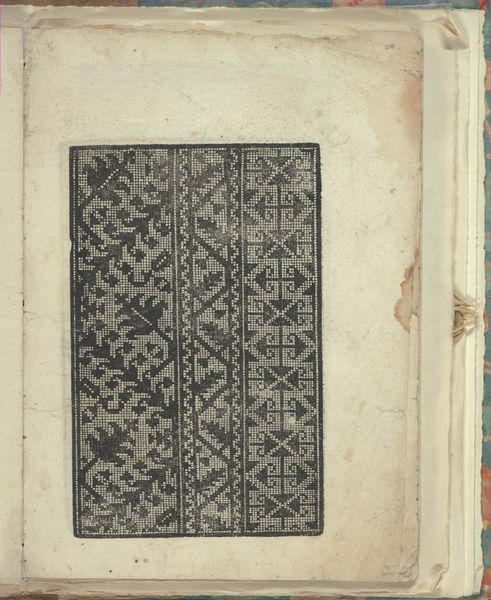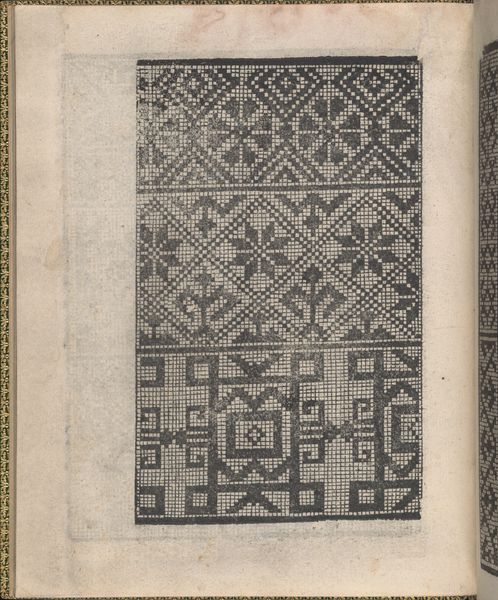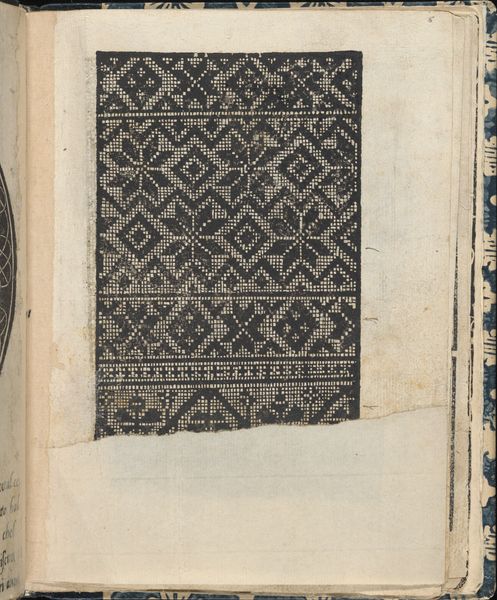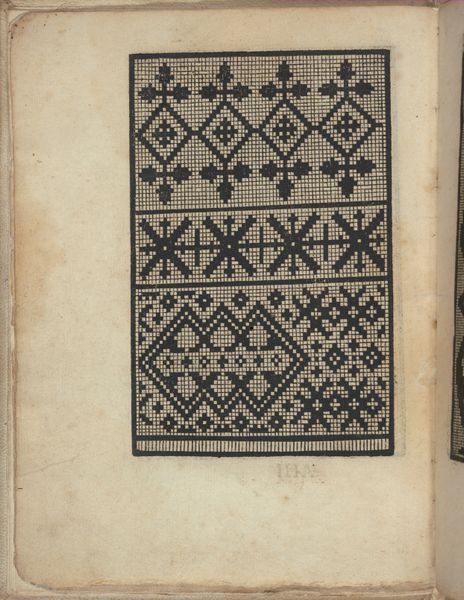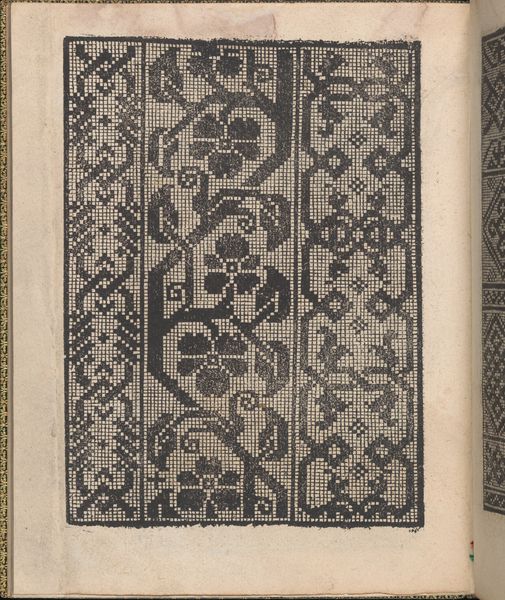
Opera Nova Universali intitulata Corona di racammi, page 14 (recto) 1530
0:00
0:00
drawing, graphic-art, ornament, print, paper, woodcut, engraving
#
drawing
#
graphic-art
#
ornament
#
medieval
# print
#
book
#
paper
#
11_renaissance
#
geometric
#
woodcut
#
line
#
decorative-art
#
engraving
Dimensions: Overall: 8 7/8 x 6 7/8 in. (22.5 x 17.5 cm)
Copyright: Public Domain
This is page 14 from ‘Corona di racammi,’ a book of embroidery patterns made by Giovanni Andrea Vavassore in Venice in the 16th century. It's made using the technique of woodcut, a relatively accessible method of printing that allowed for the wide distribution of designs. The repeating geometric patterns and stylized floral motifs weren't just decorative. They were instructions, blueprints for the needleworker. What's fascinating here is the direct connection between the printed image and the labor of textile production. Each square on the grid would correspond to a stitch, making the pattern easily scalable and repeatable. Consider the social context: embroidery was a skilled craft, often practiced by women, and pattern books like this allowed for the standardization and spread of techniques. By understanding the means of production, we can appreciate how this seemingly simple image played a role in the wider world of craft, commerce, and the lives of the people who made these patterns into reality with needle and thread. It collapses any assumed hierarchy between design and making.
Comments
No comments
Be the first to comment and join the conversation on the ultimate creative platform.



